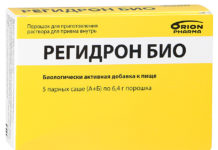Most people are convinced that velvet is a fabric known for its softness and smoothness. But it turns out that velvet can be found in the plant world. This is a tree called Amur velvet. What is remarkable for this representative of the flora, and what properties distinguish it?
Material Content:
Amur Velvet: Botanical Description of a Plant
Amur velvet is a tree with feathery foliage and a spreading crown. The plant belongs to the category of perennials. The height of the velvet can reach 28 meters. The leaves have a specific smell, easily palpable if you rub them in the palms. The trunk is covered with a gray bark, mottled with small wrinkles, soft and velvety to the touch.
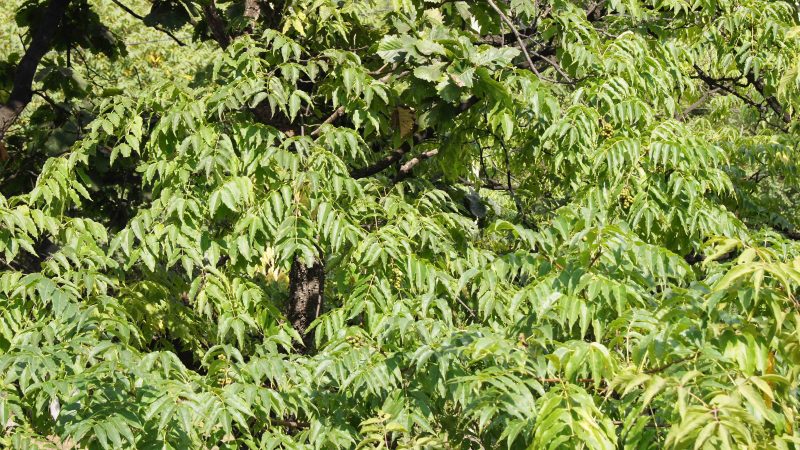
The flowers are small, same-sex greenish tint. The fruits of velvet resemble black balls. Flowering starts in early summer, and the crop can be harvested from August to the beginning of the autumn season.
Amur handsome is moody in relation to the soil: it must be fertile and moist. The roots are strong, going deep underground. The plant is resistant to weather conditions, hardy in cold winters, tolerates transplantation well.
Freshly picked seeds are suitable for tree propagation. His life span can be up to 300 years.
Therapeutic and beneficial properties
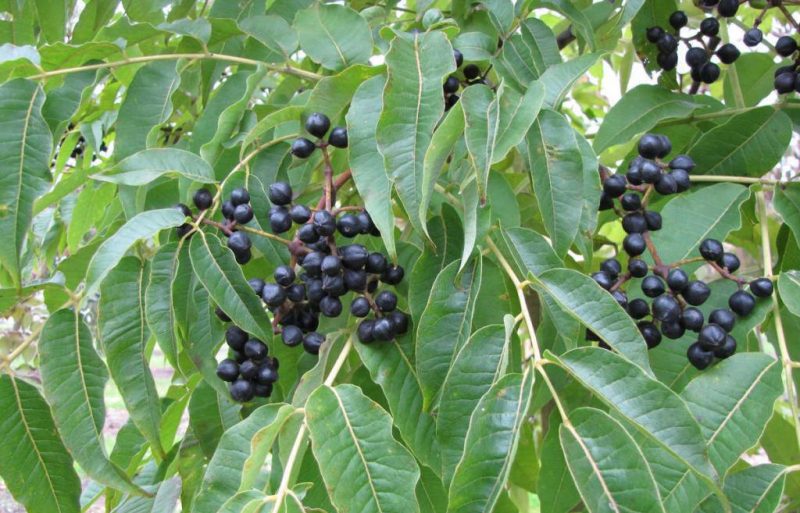
Velvet is known for its extensive healing properties, including:
- antiseptic;
- hypotensive;
- antipyretic;
- anthelmintic;
- hemostatic;
- antimicrobial.
These healing effects are used for the prevention and treatment of diseases such as:
- gastritis;
- hypertension;
- flu and the common cold;
- arthrosis, arthritis;
- dysentery;
- stomatitis.
The use of Amur velvet in folk medicine
Amur velvet is practically not used in traditional medicine, despite its well-known medicinal properties. But the constituent plants are actively used in the preparation of miraculous folk recipes.

Decoctions of fruits and bark are effective for pulmonary tuberculosis, pneumonia and diabetes. These funds have a deodorizing, astringent, antipyretic effects. In addition, fruit decoctions help with pathologies of the oral cavity and stomach. Dermatological diseases are treated with decoctions of velvet bark and bast. They are also effective in the treatment of renal pathologies, in particular nephritis.
Note. The experiments confirmed that preparations made using various parts of Amur velvet have antihypertensive and fungicidal effects. In addition, the plant increases resistance to sarcomas and hematomas.
A beautiful tree with carved leaves not only enhances health, but also pleases the eye. Amur velvet often performs a decorative function, growing on the territory of hospitals, resorts and other institutions.
What is useful tree bark
The “clothing” of the tree gained the most popularity in the manufacture of folk potions. In Tibet, this component was actively used by local healers who recommended decoction from the bark to people suffering from pathologies of the kidneys, dermatitis or polyarthritis. With ascites, tincture of the cortex is relevant.
Infusion of velvet bark mixed with leaves helps to eliminate inflammation and fever. This tool is good for dysentery and inflammation of the large intestine, lung diseases and infectious hepatitis.
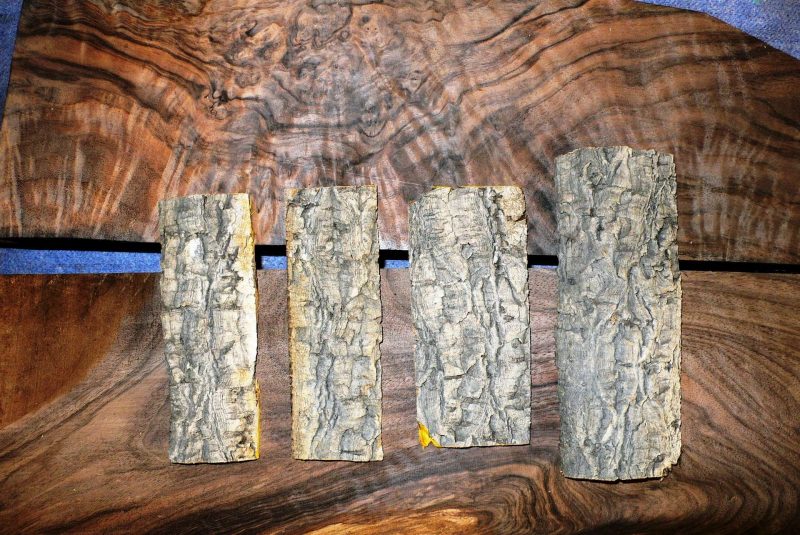
Wound healing infusion from Amur velvet bark
The product perfectly heals all types of wounds. For its preparation, 100 g of velvet bark is insisted for 2 days in 0.5 l of water (preferably distilled). After the set time, the infusion is put on fire and heated. Next, the liquid is poured into a glass container, put in a large container and boiled for 30 minutes. The broth is decanted, 5 g of novocaine and 15 g of boric acid are added. Boil the resulting mixture for 10 minutes. The agent is impregnated with gauze and applied to the wound until it is completely healed.
What diseases does Amur velvet berry help?
Due to the original color of velvet berries, in China the plant is called "black pearl".
Regular consumption of Amur fruits in food lowers blood sugar and regulates the pancreas. Berries are used in the treatment of flu and colds.
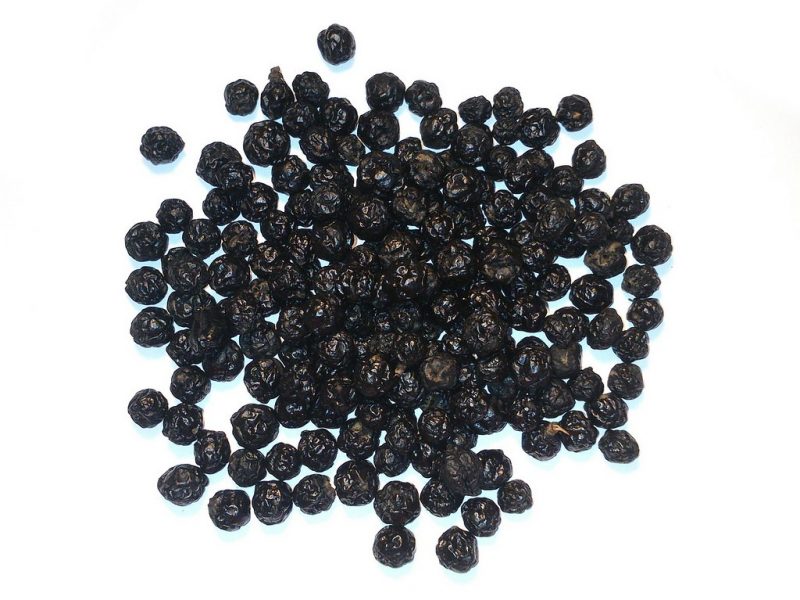
Black balls, the fruits of velvet, are relevant in the fight against diabetes. To do this, you need to daily feast on an empty stomach with 3-4 fruits, biting and carefully chewing them. In no case should berries be washed down! Such a technique will reduce blood sugar to normal within six months.
Attention! Treatment with velvet fruits is allowed only to patients with a 2 degree of diabetes.
To alleviate the symptoms of flu and colds, they eat 1-2 velvet fruits before going to bed. At least 6 hours after administration, it is forbidden to take any liquid. If the ailment has begun recently, one dose per day will be sufficient. If the disease progresses, the number of doses should be increased to 2-3 per day.
With elevated blood pressure levels, 1-2 velvet berries are best eaten daily half an hour before meals.
Amur velvet honey: healing properties
In early summer, Amur velvet begins flowering, lasting almost a month. Interestingly, some of the trees have exclusively female flowers, and the other part only male flowers, from which the fruits appear.
The main pollinators of the Amur long-liver are bees, but sometimes the wind also does this work. Abundant flowering attracts hardworking insects with nectar and pollen.
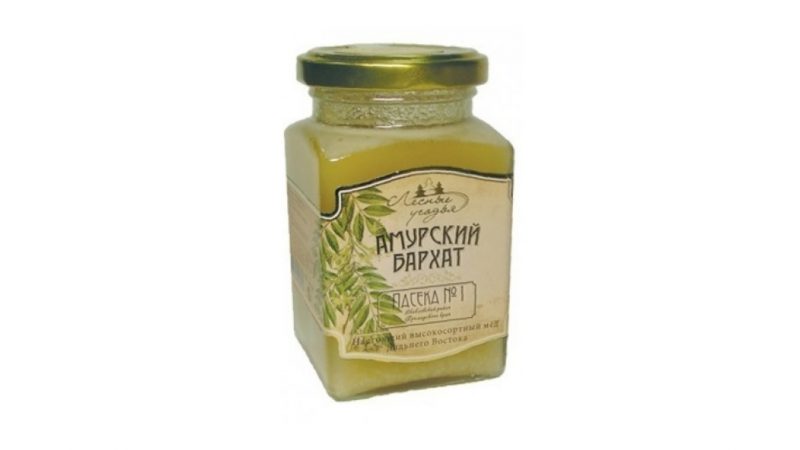
The resulting honey has a dark yellow color, with a slightly greenish tone. The product is very tasty and fragrant.The quality of honey directly depends on the weather during the flowering period of the tree: a warm summer guarantees good honey properties of velvet. If the weather is rainy and cold, the formation of nectar is at risk.
Velvet honey is famous for its properties:
- Stabilizes blood sugar.
- It removes toxins from the body.
- Relieves inflammation.
- Regulates the pancreas.
- Normalizes sleep.
Velvet honey does not crystallize for a long time due to the low glucose content. This treat is often used to treat tuberculosis and other diseases of the respiratory system.
Contraindications and side effects

Amur velvet has contraindications:
- Fruits and tincture of the plant is not recommended for use during pregnancy and lactation
- The plant should not be used to treat children.
- You should not eat more than 5 velvet fruits at a time.
- People who use velvet berry treatment should not drink alcohol, tobacco, or strong black coffee throughout the course.
Amur velvet is a beautiful, hardy plant that performs not only decorative, but also healing functions. Moreover, absolutely all its parts are useful without exception: from bark to fruits. They are used to make healing broths and tinctures. Small “black pearls” - velvet berries, have a pleasant taste, and therefore they can be eaten fresh. Velvet honey, used in the treatment of multiple diseases of the respiratory system, is especially popular.







